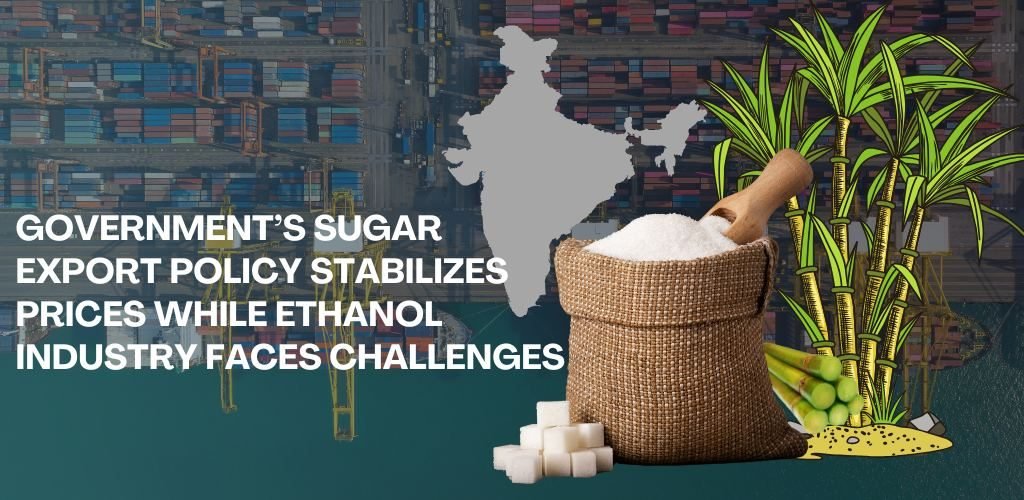Government’s Sugar Export Policy Stabilizes Prices While Ethanol Industry Faces Challenges
Government’s Sugar Export Policy Stabilizes Prices While Ethanol Industry Faces Challenges

In recent developments concerning the Indian sugar market, the government’s sugar export policy has played a pivotal role in maintaining stable prices, according to industry experts. This strategy comes at a time when the ethanol sector continues to grapple with various challenges, particularly due to stagnant pricing structures.
Avantika Saraogi, Executive Director of Balrampur Chini Mills, one of India’s largest integrated sugar manufacturing companies, addressed these issues in a recent interview. She noted that the decision not to raise ethanol prices this year—a policy that many in the sector had anticipated—poses significant challenges for producers. Even as sugar prices remain strong, the ethanol industry’s economic viability is being compromised.
Sugar Prices Hold Steady
The government’s decision to limit the quantity of sugar allowed for export has contributed to keeping domestic sugar prices in line with global market conditions. This measure is seen as essential for shielding consumers from volatile international prices while also ensuring that Indian sugar farmers receive fair compensation for their crops.
Saraogi highlighted that the stability of sugar prices is largely supported by the government’s proactive stance, which has prevented drastic fluctuations. “Government policies have allowed a certain amount of sugar to be exported, which has aligned domestic prices with international trends,” she remarked.
Ethanol Production Under Strain
In stark contrast, the ethanol sector finds itself under immense pressure. The restriction on ethanol production from sugarcane juice has resulted in significant inventory challenges. Saraogi pointed out that the ethanol production restrictions imposed last year meant that Balrampur Chini Mills recorded zero ethanol in storage by the end of the ethanol year, drastically impacting revenues from this segment.
“We produced more sugar this year, but we ended up holding more inventory due to reduced ethanol output,” she explained. Additionally, the fair and remunerative price (FRP) of sugarcane has seen an increase from ₹305 per quintal to ₹340, yet without a correlating rise in ethanol prices, many producers are feeling the squeeze.
Looking Forward
Industry insiders are keenly watching for policy shifts that might alleviate the issues faced by the ethanol sector. There is a consensus that to sustain the profitability of sugar mills, a reevaluation of the ethanol pricing structure is imperative.
Saraogi has expressed cautious optimism regarding future government initiatives that may bolster productivity and assist in the recovery of the ethanol market. She referenced the newly announced National Mission on High Yielding Seeds by the Finance Minister as a potential game-changer, aimed at improving the overall yield of sugarcane.
Conclusion
While the government’s sugar export policy offers much-needed stability to the sugar market, the persistent woes of the ethanol sector reveal the complexities and interdependencies within agricultural policies. As stakeholders await potential adjustments in pricing and production policies, the hope remains that strategic moves could bring balance to both sectors in the near future.